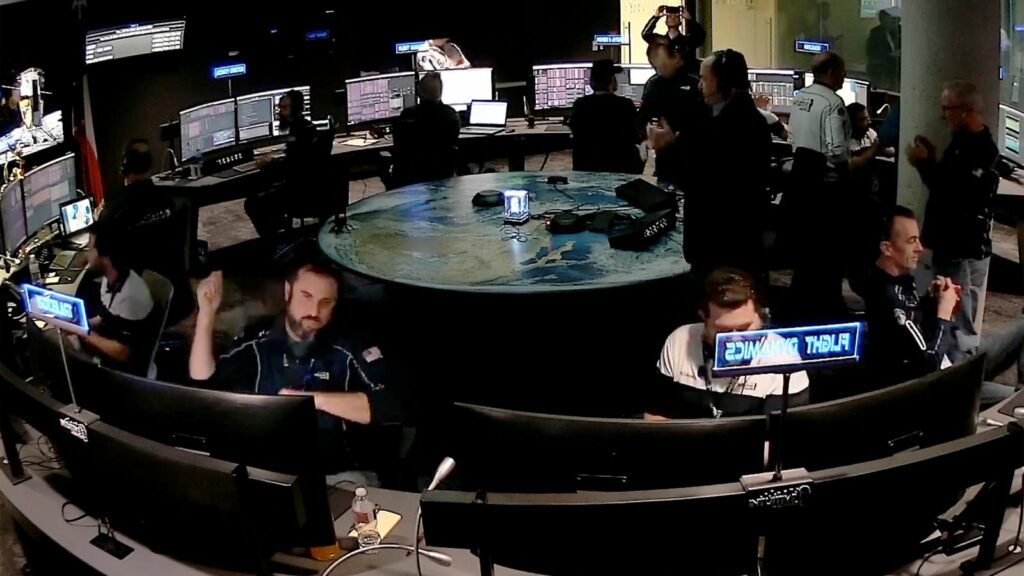Don’t underestimate the significance of the latest moon landing | Science & Tech News

Don’t underestimate the significance of this latest moon landing.
The first by the US in more than 50 years, the first by a private company and the first so close to the intriguing south pole.
Many other nations have landed during America’s absence: Russia, China, India and most recently Japan. The US is a late runner in the new dash to the moon.
When America was last there it was with the Apollo programme, which employed 500,000 people and consumed 2.5% of GDP annually for a decade.
NASA is sending humans back, perhaps in as little as two years. But this time it needs to do it cheaper.
That’s where private companies come in. The latest landing was by Texas-based Intuitive Machines, which was paid $118million (£94million) to take a payload of scientific instruments.
Computer animation. Pic: NASA
That’s a bargain for NASA, and a challenge for the company, which has had to innovate with 3D-printed rocket engines and other technology to keep costs down.
Innovation by companies like Space X and Blue Origin have made it far cheaper to put satellites into near-Earth orbit. And the hope is that private companies can do the same to open up access to the moon, shuttling people and equipment to the surface at a realistic price.
The rekindled interest in the moon is because of water.
Read more on Sky News:
Astronomers discover dozens of planets cool enough for life
NASA offers chance to send your name to the moon
Molten ‘blanket’ covering Mars gives new clues about planet
In the permanently shadowed craters at the south pole the temperature is as low as minus 230C and there are good indications that water is present in huge quantities as ice. That’s why Odysseus was sent to the region.
Water would make long-duration human missions possible.
It would provide hydration for astronauts. But split the H2O molecule and there is also oxygen to breathe and hydrogen to make rocket fuel.
But not until robotic spacecraft and rovers actually go into the craters will it be clear how much there is, and how easily it can be collected.

People cheer in Houston, Texas, after the moon landing
Odysseus won’t do that. But critically the spacecraft is testing out the navigational aids that will be needed to safely land at the south pole, a hazardous region of boulders, cliffs and slopes.
That will make future landings less of a gamble. Half of all previous missions have ended in failure.
The success of this landing will accelerate the arrival of more spacecraft. Several missions are already planned this year.
In the Greek myths Odysseus was the wise, brave hero who undertook a challenging journey.
The same could be said of Odysseus the spacecraft as it opens a new chapter in lunar exploration.







Recent Comments